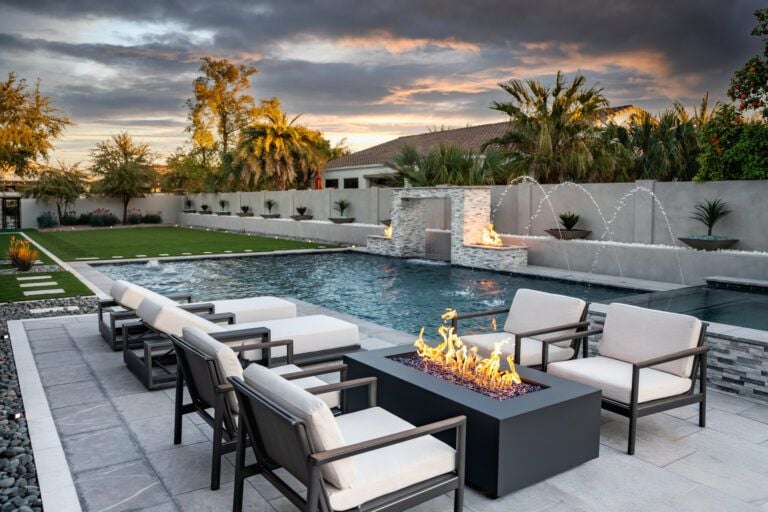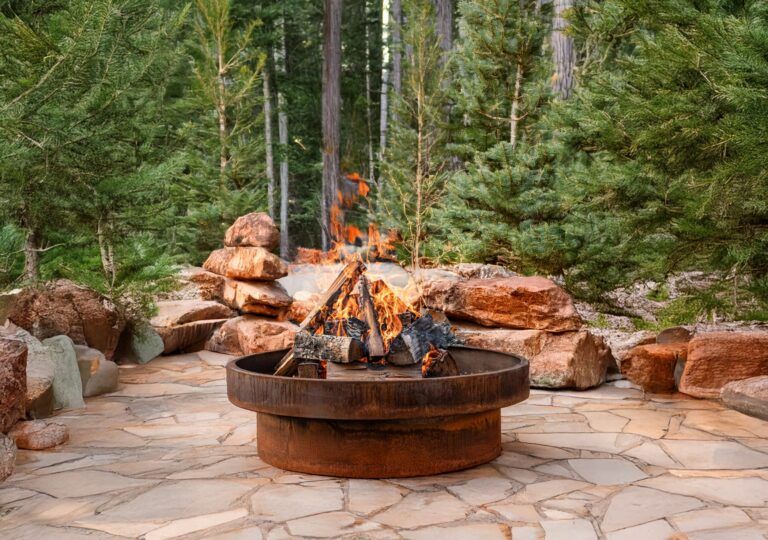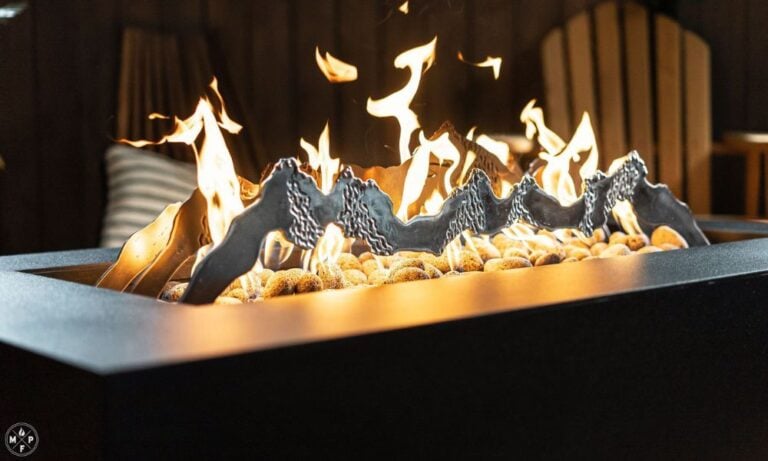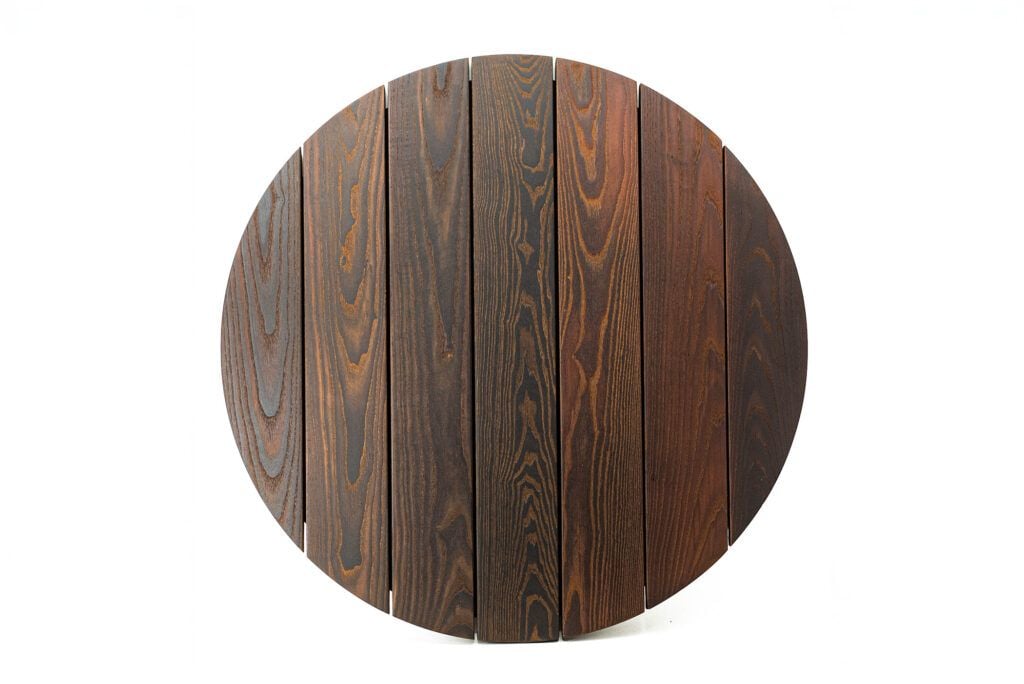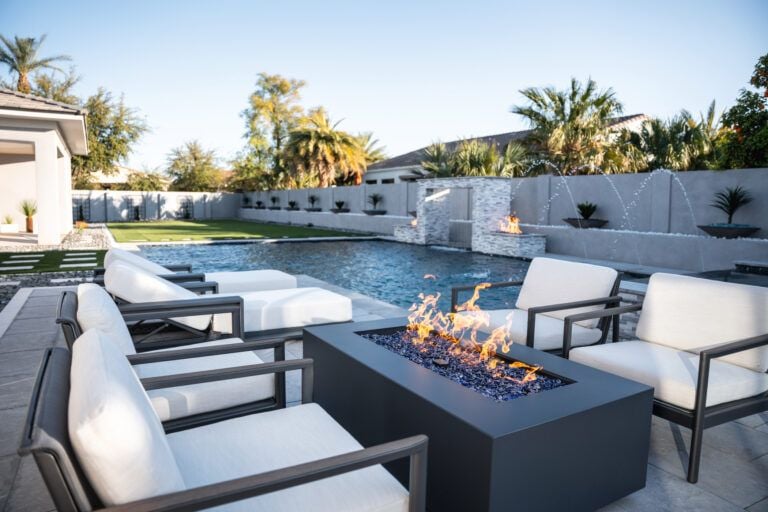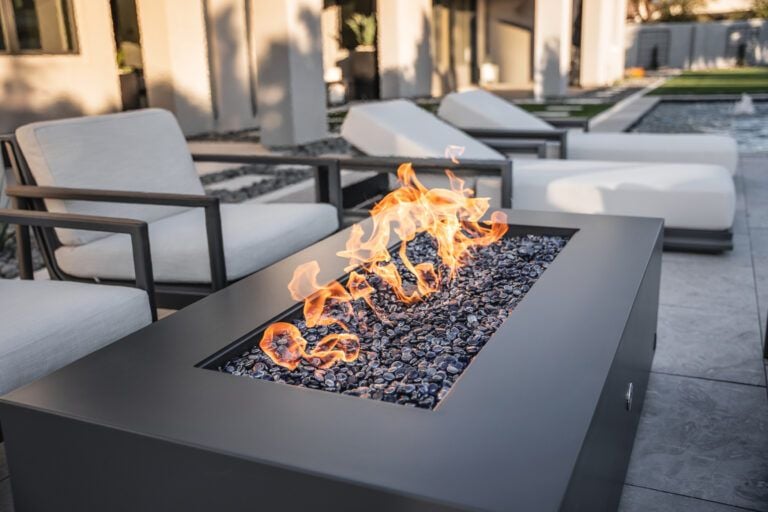
Homeowner Tips: Common Backyard Fire Pit Laws & Regulations
A backyard fire pit is the perfect place to gather with friends, share stories, indulge in campfire foods, and relax in the evenings. Before you rush into purchasing a perfect fire pit, you should be familiar with common gas fire pit regulations and laws. This information will help you follow legal practices that ensure the safety of yourself, your family, and your home.
Material Restrictions for Fuel
Ordinances on appropriate materials for burning in a home fire pit can vary between municipalities. Some jurisdictions limit burning to clean, seasoned firewood and prohibit using leaves, paper products, and treated wood. By sticking to the recommended burn materials, you’re adhering to local laws and reducing the emission of toxic fumes that pollute the air and harm your health.
Pro-tip: Look up your local regulations to confirm the materials you can burn in your fire pit. Consider a clean alternative, like a rectangle gas fire pit, to minimize air pollution and comply with environmental guidelines.
Fire Pit Location Guidelines
Placing your fire pit in a safe spot will keep your backyard safe. Check your local zoning regulations for the exact distance requirements between your fire pit and various structures, such as your home, shed, or neighbors’ property lines. Typical rules require a fire pit to be at least 10–25 feet away from structures or combustible materials.
Pro-tip: Choosing a safe location for your fire pit can prevent fire hazards, so account for its size and plan your setup well.
Regulations for Supervising Your Fire
Adult supervision is vital when operating a fire pit. Most ordinances dictate that a responsible adult must always be present while a fire burns and that a fire extinguishing device (like a water hose or fire extinguisher) should be easily accessible. Safe practices and adult supervision are essential for preventing accidental fires and keeping everyone safe.
Pro-tip: Supervision also includes dousing of the fire after use. Never leave a fire pit unattended or smoldering overnight, as it could grow out of control.
Permit and Insurance Considerations
Some cities require homeowners to obtain a permit before installing a backyard fire pit. This could involve registering your fire pit with the local fire department and obtaining its approval. In addition, some homeowner insurance policies may have coverage exclusions or requirements related to fire pits. Check with your insurance provider to make sure you’re covered for fire-related incidents.
You can enjoy your backyard fire pit when you familiarize yourself with common laws and regulations in your area. Adhering to local ordinances and practicing fire safety can minimize the risk of fire-related accidents. Now, you can find your dream fire pit with Montana Fire Pits! We offer a wide range of fire features that use clean fuel, such as propane and natural gas.
The MFP Advantage
- Professional Grade Quality
- Nationwide Shipping
- Made in the U.S.A.
- Distinctive, Hand-Built Products
- Vast Size & Finish Options
- Highest Customer Satisfaction
- Custom Design Available
Explore our exceptional line of fire and outdoor products and take your space to new levels of Luxury...
More to explorer
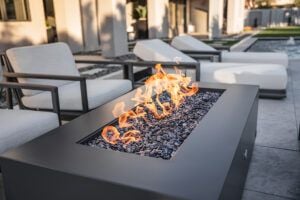
Top 10 Fire Pits of 2025: Warmth and Style for Your Outdoor Space
As the days get longer and the evenings get cooler, what better way to enjoy your outdoor space than with a fire

The Benefits of Multiple Fire Features in Backyard Design
Imagine stepping into your backyard and being greeted by the alluring dance of flames throughout your space! Creating a backyard design with
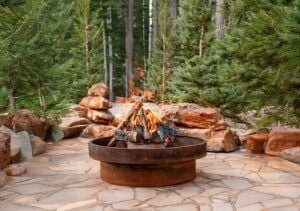
Discover the Timberline Collection of Wood Burning Fire Pits
In a world that’s constantly buzzing with the convenience of instant gratification, there’s a timeless appeal to the simple, primal pleasure of



